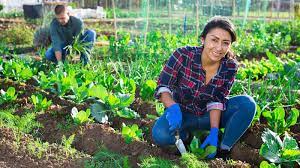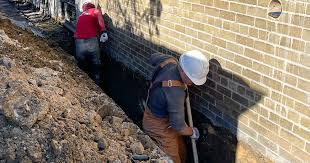Having a lush garden can transform your outdoor space into a serene oasis. Not only can it be visually appealing, but it can also be a therapeutic hobby to cultivate a green thumb. However, getting started on building a garden can be overwhelming for beginners. This blog post aims to guide you through some simple steps on how to cultivate a green thumb and create a blooming garden Learn the secrets of a green thumb with The Dedicated House.
Start Small
If it’s your first garden, start small. Don’t immediately dive into a large garden project without prior experience as it can be overwhelming. Small gardens are manageable and easier to maintain, making them the perfect place to start. Begin with container gardening, herb gardens, or a small raised bed. Doing this will let you learn more about gardening, and once you have developed the basics, you can decide to tackle more complex projects.
Choose the Right Location
Choosing the right location is vital in garden development. Pick a spot for your garden that receives plenty of sunlight as most vegetables and plants require sunlight to grow. The location must also have good drainage as waterlogged soil can be challenging to work with. Access to a water source should also be a first and foremost consideration. All these make for a favorable environment to facilitate the growth of your plants.
Know your Soil
Healthy soil determines the success of your garden. Determine the type of soil in your garden or yard—this can be done by testing your soil’s pH levels. Balancing soil pH levels involves adding necessary amendments to make your soil more suitable for plant growth. Once you know your soil type, you can then start planning the plants and vegetables that will grow well in your garden.
Choose the Right Plants
Choosing the right plants is essential in garden development. Determine the types of vegetables, plants, or flowers that are suitable for your soil type, climate, and level of expertise. Ensure that you choose plants that complement each other. For instance, planting repellent plants such as garlic and onions helps keep pests away from other plants.
Water and Compost
Watering your garden is critical, especially during the initial growth phase. Ensure that the plants receive enough water during hot days. On the other hand, overwatering can be harmful to the plants, so be mindful of the amount of water used. Composting is also necessary to provide and maintain soil nutrients. You can use your compost or buy one from your local garden center to add nutrients to the soil.
Conclusion:
Growing a garden is an enjoyable hobby and can benefit you and the environment. It provides a peaceful environment, fresh produce, and is a great way to reduce carbon in the atmosphere. Starting small, getting your soil tested, choosing the right plants, watering and composting are simple steps to follow when developing a green thumb. With proper care and maintenance, you can enjoy a flourishing garden all year round.



